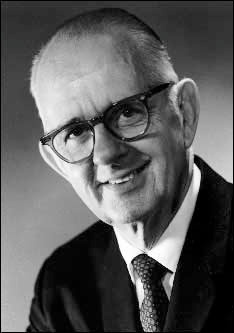Converging Pathways of Pain Research at NIDCR
...
Table of Contents
| Div | ||||||||||||||||
|---|---|---|---|---|---|---|---|---|---|---|---|---|---|---|---|---|
| ||||||||||||||||
|
Introduction
| Div | ||||||||||
|---|---|---|---|---|---|---|---|---|---|---|
| ||||||||||
|
Pain and the Dentist
| Div | ||||||||||
|---|---|---|---|---|---|---|---|---|---|---|
| ||||||||||
|
| Div | ||||||||||
|---|---|---|---|---|---|---|---|---|---|---|
| ||||||||||
|
Problems with general anesthesia in dentistry, 1960
- Lack of training and experience
- Lack of staff
- Lack of data about agents used
Edward Driscoll of NIDR's1 Oral Medicine and Surgery Section began conducting studies of dental anesthesia in 1957. His aims were: to establish the necessary baseline physiological data; to evaluate the effects of stress on the dental patient; and to find the best methods of alleviation. With his associates, he performed full mouth extractions on more than 1200 patients, and collected readings for pulse, blood pressure, respiration, arterial oxygen levels, EEG, and EKG. Edward Driscoll. Photograph courtesy of NIDCR Public Information Office.
...
Ron Dubner and the "Lone Rangers"
| Div | ||||||||||
|---|---|---|---|---|---|---|---|---|---|---|
| ||||||||||
|
...
A New Multi-Disciplinary Unit
At this point, Dubner decided that he needed to "pick the brain" of a leader in the field and arranged a year's sabbatical at University College London with Patrick Wall (1970-71). He returned from London to an expanded and growing Section. Rhyuji Sumino had arrived from Japan to begin several years of collaborative work; he would soon be joined by Donald Price and Jimmy Hu . NIDR was reorganizing both its intramural and its extramural programs; as part of this initiative, Ed Driscoll played a key role on the Institute's Ad Hoc Advisory Committee on Pain Control (1971-72).
The first major result of the Committee's recommendations was the creation in 1973 of a new extramural program for Pain Control and Behavioral Studies, under the leadership of Aaron Ganz . NIDR's extramural support provided crucial support for the International Symposium on Pain held in Issaquah, Washington, in May 1973, which led to the formation of the International Association for the Study of Pain and the founding of its journal, Pain.
John Bonica, organizer of the Issaquah meeting and the "godfather" of the multidisciplinary pain field, used NIDR grants to support his broad-based pain research program at the University of Washington. In a letter to Aaron Ganz in 1979, he noted that: "NIDR has the best record of supporting pain research [of all the Institutes]."3
The other major outcome of the NIDR reorganization was the formation of the Neurobiology and Anesthesiology Branch (NAB) in 1974, a new unit incorporating Ron Dubner's basic science work with a reactivated program to improve dental anesthesia and analgesia. John Bonica wrote in 1980 that the NAB had proven to be "one of the most productive groups of pain researchers in the world." 4
The remarkable productivity stems from the conjunction of these two events: the formation of a new pain research unit around the core group established by Dubner and the consensus reached at Issaquah that the study of pain required a multidisciplinary approach.
Most previous physiological research had treated pain as a problem in sensory perception, based on specific "hard-wired" nerve structures and mechanisms which could be isolated in the laboratory. The more complex model of Bonica, Wall, and Melzack described pain as a dynamic phenomenon of an organism reacting to the environment, or, as Bonica had written in 1953, "the compound result of physiopsychological processes whose complexity is almost beyond comprehension."5
Influenced by these three pioneers, Dubner visualized a program which would integrate electrophysiological and neurocytological studies of the trigeminal neural system with behavioral experiments in animals, and with clinical and psychophysical assessments of pain in human subjects.
Photograph of the Neurobiology and Anesthesiology Branch, 1979
The Neurobiology and Anesthesiology Branch, 1979
The Neurobiology and Anesthesiology Branch
A Multidisciplinary Research Program:
electrophysiology
neuroanatomy
neurochemistry
animal behavior
clinical pharmacology
psychophysics
For more information on the history of the pain field, see: "The Relief of Pain and Suffering" (an online exhibit).
For more information on the American Pain Society: www.ampainsoc.org
...
John Bonica at the podium.
The Monkey's Informed Choices
The awake behaving monkey experiments were among the most important undertaken by the Neurobiology and Anesthesiology Branch at NIDR in the 1970s and 1980s. These were real time observations of the ways in which an animal processed, reacted to, and acted on complex environmental information, including a noxious stimulus (a contact thermode placed near the lip), while microelectrode recordings were taken of the neuronal activity in the trigeminal brainstem. Originally designed by Ron Dubner and Ralph Beitel, the behavioral studies continued through several generations of postdocs and lab workers, including Catherine Bushnell, Gary Duncan, Ron Hayes, Donna Hoffman, Daniel Kenshalo, William Maixner, and Jean-Marie Oliveras .
Essential to the project were Fred Brown's skills and almost tactile sense of electronics, which enabled him to design and build the specifically configured equipment the researchers used to make very fine and precise real-time adjustments in stimulus intensity, timing, and duration.
Ron Dubner described the monkey experiments: "You asked your questions through [the behavior]. Once you did that, and once you successfully recorded from neurons while the animal was performing the behavior, the data just fell out...The nervous system was telling you what it was doing."6
Monkeys were trained in several complex tasks. In an initial task, the monkeys responded to a perceived shift in temperature, by pressing a panel to receive "a liquid reward" (water or juice). A second model allowed the monkey to make "informed choices" and forced him to discriminate between behaviorally-relevant and non-relevant stimuli.
A schematic ofthree tasks in the awake behaving monkey experiments. The three tasks are:an innocuous thermal task; a noxious thermal task; and a visual task. And an illustration of a monkey performing tasks. The drawing identifies the thermode, the readylight & button, and the visual cue.
From Task-related responses of monkey medullary dorsal horn neurons
The monkey could choose to initiate a trial at any time by pressing a panel and could terminate any painful stimulus by releasing the panel. When he activated the stimulus, the thermode presented sequences of low and high-temperature heat pulses in a "quasi-random" sequence. If the monkey released the panel within two seconds after he detected a temperature shift downward, he received his reward. Noxious stimuli (45 oC or higher) were presented for only a few seconds and could be immediately terminated by the monkey. He would receive no reward, however, unless he waited for the downward shift. A third type of task required the monkey to earn his reward by responding to a visual cue (light), while ignoring the temperature shifts of the thermode pulse (although again, noxious stimuli could be terminated immediately.)
Once a monkey had learned the tasks, the researchers began recording trigeminal neuron activity, using a microelectrode method developed by Ed Evarts at the National Institute of Mental Health (NIMH) . The key data recorded were the time delay before the nerve responded to a stimulus and the frequency with which the nerve "fired". These were analyzed in conjunction with electrophysiological recordings from the same neurons in anesthetized animals and with anatomical and cytological observations under electron microscopy.
Back To Top | Photography Credits
References
6 Interview with Ron Dubner, 1999
...
A schematic of three tasks in the awake behaving monkey experiments. The three tasks are: an innocuous thermal task; a noxious thermal task; and a visual task.
A schematic of three tasks in the awake behaving monkey experiments. The three tasks are: an innocuous thermal task; a noxious thermal task; and a visual task
An illustrationof a monkey performing tasks. The drawing identifies the thermode, the readylight; button, and the visual cue.
An illustration of a monkey performing tasks. The drawing identifies the thermode, the ready light & button, and the visual cue
The Monkey's Informed Choices
The awake behaving monkey experiments were among the most important undertaken by the Neurobiology and Anesthesiology Branch at NIDR in the 1970s and 1980s. These were real time observations of the ways in which an animal processed, reacted to, and acted on complex environmental information, including a noxious stimulus (a contact thermode placed near the lip), while microelectrode recordings were taken of the neuronal activity in the trigeminal brainstem. Originally designed by Ron Dubner and Ralph Beitel, the behavioral studies continued through several generations of postdocs and lab workers, including Catherine Bushnell, Gary Duncan, Ron Hayes, Donna Hoffman, Daniel Kenshalo, William Maixner, and Jean-Marie Oliveras .
Essential to the project were Fred Brown's skills and almost tactile sense of electronics, which enabled him to design and build the specifically configured equipment the researchers used to make very fine and precise real-time adjustments in stimulus intensity, timing, and duration.
Ron Dubner described the monkey experiments: "You asked your questions through [the behavior]. Once you did that, and once you successfully recorded from neurons while the animal was performing the behavior, the data just fell out...The nervous system was telling you what it was doing."6
Monkeys were trained in several complex tasks. In an initial task, the monkeys responded to a perceived shift in temperature, by pressing a panel to receive "a liquid reward" (water or juice). A second model allowed the monkey to make "informed choices" and forced him to discriminate between behaviorally-relevant and non-relevant stimuli.
A schematic of three tasks in the awake behaving monkey experiments. The three tasks are:an innocuous thermal task; a noxious thermal task; and a visual task. And an illustration of a monkey performing tasks. The drawing identifies the thermode, the readylight & button, and the visual cue.
...
|
...
Once a monkey had learned the tasks, the researchers began recording trigeminal neuron activity, using a microelectrode method developed by Ed Evarts at the National Institute of Mental Health (NIMH) . The key data recorded were the time delay before the nerve responded to a stimulus and the frequency with which the nerve "fired". These were analyzed in conjunction with electrophysiological recordings from the same neurons in anesthetized animals and with anatomical and cytological observations under electron microscopy.
Nociceptive-Specific neurons and Wide-Dynamic-Range neurons
...
References
6 Interview with Ron Dubner, 1999
...
|
...
References
1 The National Institute of Dental Research (NIDR) was renamed the National Institute of Dental and Craniofacial Research (NIDCR) on October 21, 1998.
...




